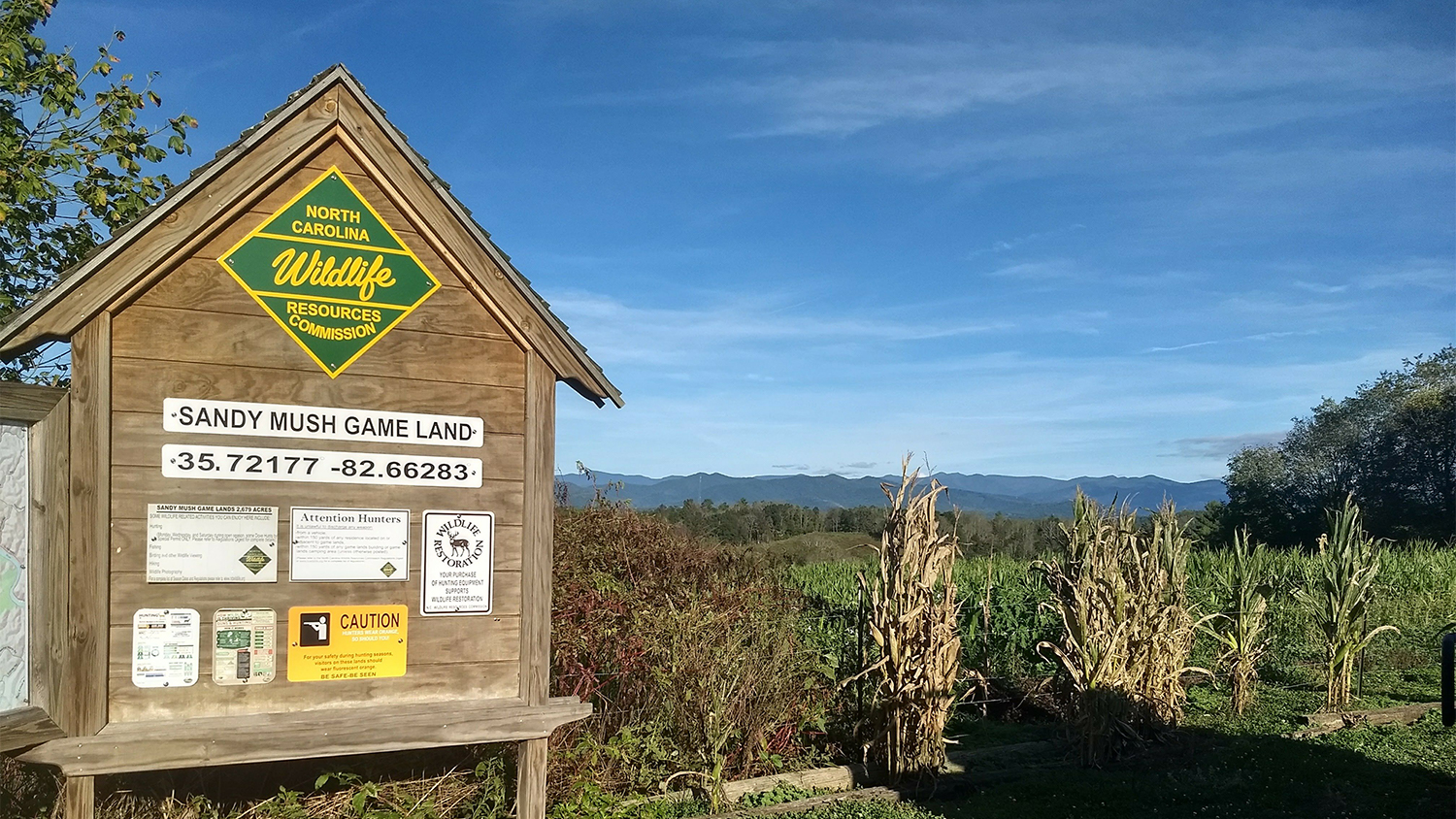Public hunting grounds — or game lands — can have numerous economic benefits for nearby communities, a major one of which is increasing property values.
Researchers in NC State’s College of Natural Resources are currently exploring the economic impacts and value of game lands in North Carolina, including how the increase in property values can contribute to the economic well-being of county governments and local schools.
“We’re finding that the economic contribution from game land users to the state’s GDP [gross domestic product] exceeds $140 million annually,” said William Casola, lead researcher and doctoral student in the Department of Forestry and Environmental Resources. “Game lands also have tremendous value to the hunting and fishing, hiking, biking and boating communities. Game lands truly are a property where everybody can recreate.”
Casola and his team of researchers, including Nils Peterson, a professor in the Department of Forestry and Environmental Resources, conducted in-person surveying at various game lands owned or managed by the North Carolina Wildlife Resources Commission. The researchers have been talking to visitors and users of these game lands (hunters, hikers, bicyclists, birders and boaters) to determine what they spend their money on, where they are spending it, what they value and how often they visit. They also asked visitors how willing they would be to pay for game land conservation. Casola is polishing the data on visitors’ willingness to pay, but he does see those numbers vary based on income and education.
Casola and his team are also using camera traps to monitor the use of the game lands. The result will be a statistical model estimating the annual economic contribution of game lands to the state and local economies.
“Our research has collected two years of user data using camera traps and site surveys,” Casola said. “We collected additional data this summer using camera traps, because we are interested in seeing how people are using the game lands during the COVID-19 pandemic. We want to see if there are differences in uses — maybe people are visiting more often, maybe people are visiting less often.”
Casola and his team have discovered that while living near a game land can benefit residents, it depends on the location. In certain areas in North Carolina, residing near game lands has positive effects on the value of nearby homes. For properties around Butner-Falls Game Land, for example, a one kilometer increase in proximity, results in an increase of about $1,053 for the average-priced home.
In other areas, however, living in close proximity to a game land has an insignificant effect and even negative effects in some instances. Specifically, proximity to game lands may have negative effects in locations where extremely high value natural amenities, such as beaches and national parks, exist within the same market.
The importance of protecting game lands
“North Carolina is a rapidly urbanizing state, especially here in the Piedmont,” Casola said. “This research could allow the North Carolina Wildlife Resource Commission to prepare for a future of rapid development, where the maintenance, expansion and establishment of public land must be justified by scientific data establishing the economic impacts involved.”
This research will also estimate the fiscal impact of game lands on local governments by examining trade-offs between the amount and value of taxable land. One primary objective is to investigate what is happening economically to nearby residents and local businesses and their customers when these game lands are designated as protected areas.
“It’s important to know when you establish those protected areas what it does in terms of changing who bears the costs and who benefits from that change in designation of land,” Peterson said. “There’s been a little research done on state parks and recreation areas, but not much on these wildlife-focused areas. It’s important to know what happens to local municipalities and their tax bases. If it’s turned into residential land or retail space, there may be more tax revenue that spins off it than if it’s farmland or a protected area.”
For researchers in the departments of Forestry and Environmental Resources and Parks, Recreation and Tourism Management, one vital tool used to achieve conservation or recreational objectives is obtaining permanent protection of land.
This designation can protect surrounding wildlife while allowing visitors to recreate, hunt and fish.
Casola’s data will serve to inform policies around wildlife conservation. One such recent bill that will help conserve wildlife is Recovering America’s Wildlife Act of 2019, which provides funding for the conservation or restoration of wildlife and various plant species that especially need to be protected.
“This is an excellent project to be carried out at NC State, where we have a strong extension program,” Peterson said. “I think as we move forward, there will be more opportunities to purchase and protect land for wildlife conservation. This research will inform people about the benefits of protecting the land.”



